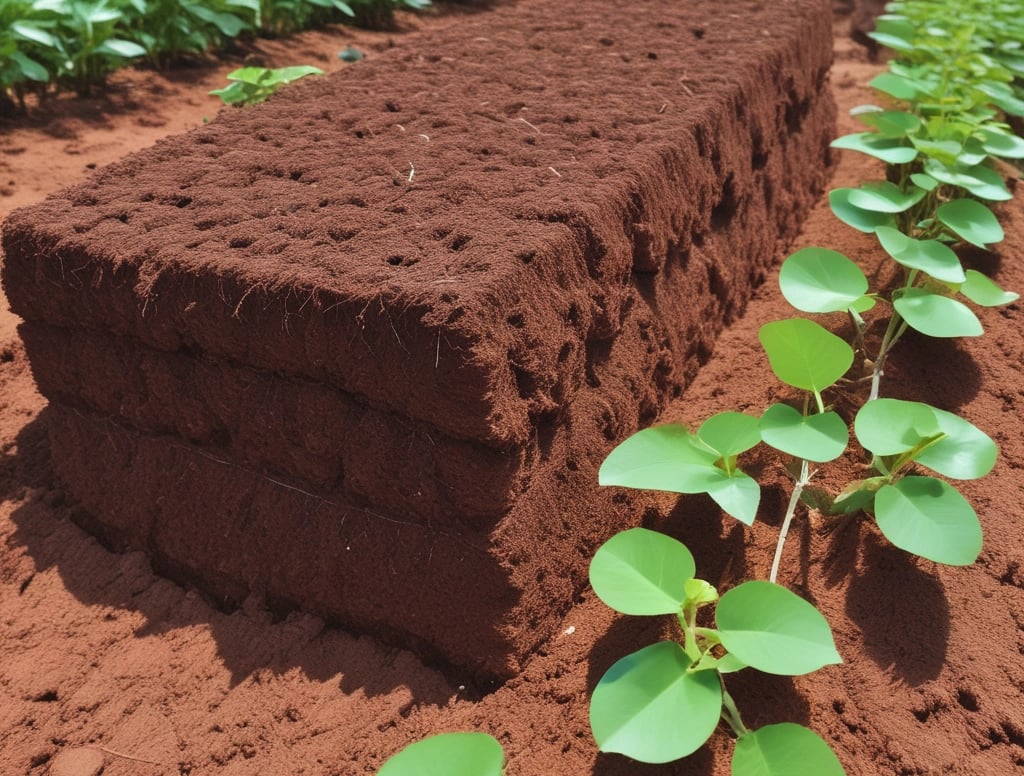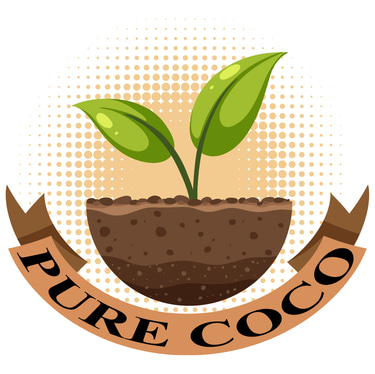Coco Peat Chronicles: Growing Green with Pure Coco
Discover the benefits of pure coco peat soil in our Coco Peat Chronicles. Learn how to grow green and sustainable from the ground up with this eco-friendly growing medium.
8/22/20255 min read


Introduction to Coco Peat
Coco peat, also known as coir pith or coconut coir, is a natural byproduct derived from the fibrous husks of coconuts. Its origins can be traced back to traditional coconut farming, particularly in tropical regions where coconut palms thrive. The extraction process begins with the harvesting of coconuts, followed by separating the husk from the shell. The husks are then processed to obtain the fibrous coir and the pith, resulting in coco peat, which consists of the dense, spongy material that serves as an excellent growth medium.
As a growing medium, coco peat has gained significant attention due to its sustainability. Unlike traditional peat moss, which is harvested from delicate peat bogs that take centuries to form, coco peat is a renewable resource. This makes it an environmentally friendly alternative that helps preserve natural peatlands, contributing to the reduction of carbon emissions and environmental degradation. Furthermore, the cultivation and processing of coconut byproducts, including coco peat, support the livelihoods of farmers in coconut-producing regions, making it an economically viable option for many.
The use of coco peat in agriculture and horticulture dates back several decades. Initially embraced for its superior water retention capability, it has since been recognized for its ability to provide aeration, improve drainage, and enhance soil structure. These properties make coco peat an ideal choice for a wide range of applications, including container gardening, seed starting, and commercial growing operations. As awareness of its benefits increases, coco peat's popularity as an essential component in sustainable agriculture continues to rise, paving the way for innovative cultivation practices and a greener future.
Benefits of Using Coco Peat in Gardening
Coco peat, a natural growing medium derived from coconut husks, offers numerous advantages for gardeners seeking sustainable and effective soil alternatives. One of the primary benefits of coco peat is its excellent water retention capacity. It can absorb and retain moisture, which is crucial for plant growth, especially in arid regions. This property allows for less frequent watering, making coco peat an efficient choice for both seasoned gardeners and novices alike.
Another significant advantage of coco peat is its aeration capabilities. The fibrous texture of this material facilitates air circulation within the soil, thereby promoting healthy root development. Well-aerated soil ensures that roots receive the necessary oxygen, which ultimately leads to robust plant growth. This is particularly beneficial for delicate seedlings, as a healthy root system is vital for their survival and overall vitality.
Coco peat also boasts a neutral pH, making it suitable for a wide variety of plants. Unlike some traditional soil amendments that may alter the soil chemistry, coco peat maintains stability within pH levels, allowing plants to thrive without the risk of nutrient lockout. This quality makes it especially appealing to hydroponic growers and those cultivating specific plant species sensitive to pH fluctuations.
Moreover, incorporating coco peat into gardening practices can significantly enhance soil health and contribute to sustainability. This organic material promotes microbial activity, essential for nutrient breakdown and availability. As it decomposes, coco peat enriches the soil, fostering a thriving ecosystem for beneficial organisms. Its biodegradable nature ensures that it does not contribute to environmental pollution, unlike synthetic alternatives. Furthermore, when compared to peat moss, coco peat is a more sustainable option, as it is a renewable resource. In sum, the benefits of using coco peat in gardening comprise enhanced water retention, superior aeration, neutral pH, and a positive impact on soil health and sustainability.
Using Coco Peat for Optimal Plant Growth
Coco peat, also known as coir, is an excellent medium for gardening, offering a multitude of benefits for plant growth. In this section, we will discuss the essential practices for effectively utilizing coco peat in your gardening endeavors.
Preparation of coco peat is the first step towards optimal plant growth. Before using it, ensure that you hydrate the coco peat thoroughly. This process involves soaking the compressed blocks in water until they expand, effectively breaking them apart and making them ready for use. Mixing coco peat with other substrates, such as perlite or vermiculite, can enhance its drainage capabilities, which is vital for preventing root rot in plants that require well-drained conditions.
When incorporating fertilizers, it is important to recognize that coco peat has a neutral pH and may be low in certain nutrients. Therefore, always choose the appropriate fertilizer based on the specific needs of your plants. For instance, vegetable plants thrive with a balanced fertilizer, whereas flowering plants may benefit from a fertilizer higher in potassium. Regularly monitoring the nutrient levels will ensure that plants receive sufficient nourishment for healthy growth.
Watering techniques play a key role in maintaining coco peat's viability as a growth medium. When watering plants, consider using drip irrigation or self-watering pots to provide consistent moisture without over-saturating the coco peat. This promotes proper aeration while preventing fungal diseases. Additionally, ensure proper drainage by placing a layer of gravel or small rocks at the bottom of the pot.
Over time, gardeners may encounter issues such as compaction or buildup of salts in coco peat. Periodically aerating the medium by loosening it will help maintain its structure. Furthermore, leaching the medium with clean water occasionally can assist in removing salt deposits, ensuring a consistent, healthy environment for plant roots.
By following these practices and tips, coco peat can be transformed into an effective medium for nurturing plant growth, providing a sustainable option for gardeners seeking to cultivate a green landscape.
Innovative Applications and Future of Coco Peat
Coco peat, derived from the husks of coconuts, has established itself as a versatile growing medium that extends its utility beyond traditional gardening. One innovative application is in hydroponics, a method that allows plants to grow without soil by using nutrient-rich water. Coco peat serves as an effective substrate in hydroponic systems, providing healthy roots with excellent aeration and moisture retention, which are vital for plant growth. By optimizing the growing environment, gardeners and farmers can achieve higher yields and faster growth rates.
Another area where coco peat is making waves is vertical gardening. As urban spaces become increasingly limited, vertical gardens offer a solution to maximize space utilization. Coco peat can be used in wall-mounted planters, reducing the weight while still ensuring excellent moisture retention and drainage. This makes it an ideal choice for urban gardeners aiming to grow herbs and vegetables in compact, space-saving designs.
Beyond these applications, the demand for eco-friendly products has led to the exploration of coco peat in various horticultural projects. Biodegradable pots, for example, are increasingly being made from coco peat. These products not only serve as sustainable alternatives to plastic pots but also contribute to the environmental benefits by decomposing naturally in the soil. This aligns with a broader trend in sustainable agriculture, where the focus is shifting toward materials that reduce environmental impact.
Looking ahead, future research directions for coco peat may include its integration with other organic materials to enhance its properties further and its potential role in carbon sequestration, which could positively affect climate change efforts. Researchers are also likely to investigate how coco peat can aid in water management in agriculture, particularly in arid regions. As environmental awareness grows, coco peat’s role in promoting sustainable practices is poised to expand, providing beneficial solutions for both gardening and farming practices.
Pure Coco
Explore our range of coco peat products today.
Support
Contact
info@purecoco.com
+91-9015762289
© 2025. All rights reserved.
Support
